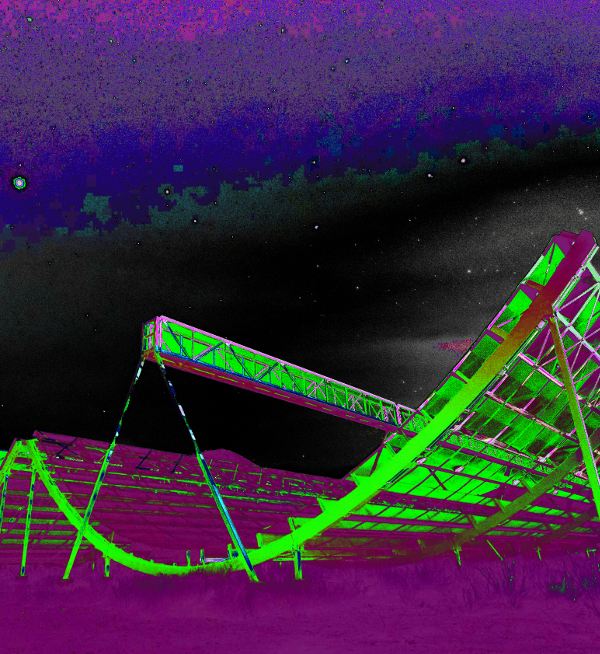Locals find missing matter
 Astronomers have solved a mystery of ‘missing matter’, which was considered an embarrassment to the field before.
Astronomers have solved a mystery of ‘missing matter’, which was considered an embarrassment to the field before.
The researchers have developed a way to detect all of the missing ‘normal’ matter in the vast space between stars and galaxies.
It has been established that most of the universe is made up of dark matter and dark energy, which have never been observed. However, around half of the ‘normal’ (non-dark) matter that maths suggests should be there has been conspicuously missing.
“We know from measurements of the Big Bang how much matter there was in the beginning of the Universe,” says researcher Associate Professor Jean-Pierre Macquart.
“But when we looked out into the present Universe, we couldn’t find half of what should be there. It was a bit of an embarrassment.”
“Intergalactic space is very sparse… the missing matter was equivalent to only one or two atoms in a room the size of an average office.
“So it was very hard to detect this matter using traditional techniques and telescopes.”
The researchers were able to directly detect the missing matter using the phenomenon known as fast radio bursts - brief flashes of energy that appear to come from random directions in the sky and last for just milliseconds.
Scientists do not yet know what causes them, but it must involve incredible energy, equivalent to the amount released by the Sun in 80 years.
These fast radio bursts (FRBs) have been difficult to detect, as astronomers do not know when and where to look for them.
But even so, Associate Professor Macquart said the team has been able to detect the missing matter by using fast radio bursts as “cosmic weigh stations”.
“The radiation from fast radio bursts gets spread out by the missing matter in the same way that you see the colours of sunlight being separated in a prism,” he said.
“We’ve now been able to measure the distances to enough fast radio bursts to determine the density of the Universe.
“We only needed six to find this missing matter.”
The key was the telescope used - CSIRO’s Australian Square Kilometre Array Pathfinder (ASKAP) radio telescope.
“ASKAP both has a wide field of view, about 60 times the size of the full Moon, and can image in high resolution,” says researcher Associate Professor Ryan Shannon.
“This means that we can catch the bursts with relative ease and then pinpoint locations to their host galaxies with incredible precision.”
“When the burst arrives at the telescope, it records a live action replay within a fraction of a second,” said Dr Keith Bannister from CSIRO, who designed the pulse capture system used in this research.
“This enables the precision to determine the location of the fast radio burst to the width of a human hair held 200 metres away,” he said.
The team was able to pin down the relationship between how far away a fast radio burst is and how the burst spreads out as it travels through the Universe.
Essentially, when FSBs travel through empty space, they remain relatively coherent. However, if they pass through space populated by baryonic or ‘normal’ matter - like the protons and neutrons that make up stars, planets and people – the different bands of the radio burst spread apart.
The process can be seen in the video below.
More details are available in the official report, published by the journal Nature.








 Print
Print